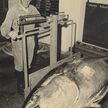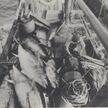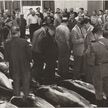
As early as the 1880s there are accounts about tuna fish in Danish waters. However, the presence of the big predatory fish was not confirmed until the 1920s. In the 1920s and 1930s very few Danish fishermen caught tuna. The big fish annoyed the fishermen as it destroyed nets and other equipment,
In the 1940s the Danish tuna fishery boomed. Thousands of tuna were landed, processed and sold from Skagen where tuna fishery was especially good. The boom continued into the 1950s where tuna fishery became a prosperous industrial adventure. More and more fishermen began fishing only for tuna in August where conditions were ideal.
From 1960 and the following years tuna fishery died out completely. An era in Danish fishery had ended. In this exhibition you will get an idea of the size of the fish as well as the quantity of the tuna fishery
Below you can see how many tuna were landed in various Danish ports in the period 1938-1960 via the interactive graph. Skagen, Thyborøn, Esbjerg and Hirtshals have been selected because it was here that most tuna were landed during the entire period.
As you can see, Skagen was dominant throughout the period, apart from a few years. Tuna fishing culminated in 1952, when more than 1,600 tonnes of tuna were landed just in Skagen.
Click on the years in the graph to fast forward, rewind or stop at specific years.




